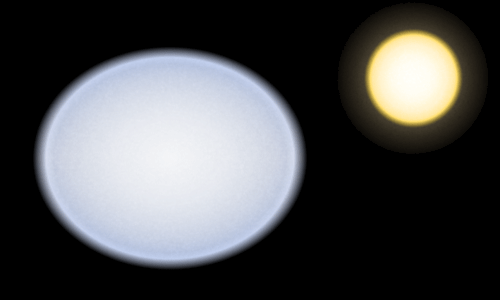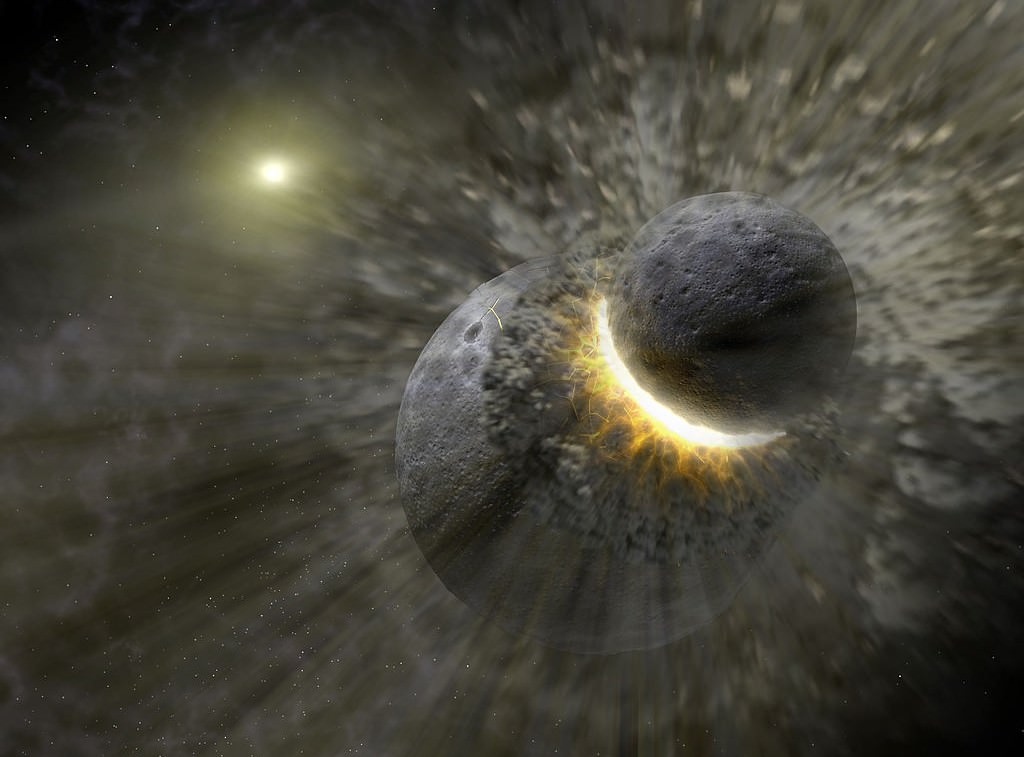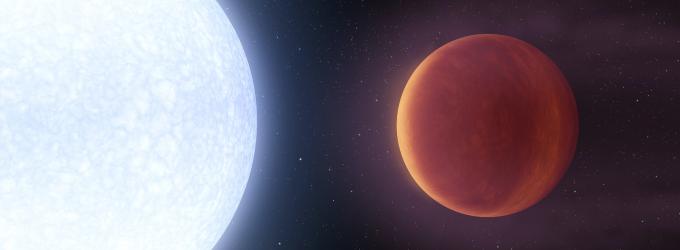Vega is one of the brightest and best known stars in the night (or even twilight) sky. Located in the constellation Lyra, it is only 25 light years from Earth, and about twice our Sun’s mass. And now, astronomers might have found one of the hottest known planets orbiting it extraordinarily quickly.
The planet, found by Spencer Hurt, a undergraduate researcher at the University of Colorado Boulder who did some work as a summer intern at Harvard’s Center for Astrophysics. As part of that summer research, Hurt examined 10 years of data on Vega collected by the Fred Lawrence Whipple Observatory in Arizona. What he found that other astronomers previously searching for a planet around the star missed, was a signal that indicated something very big was orbiting Vega very quickly.

A planet somewhere between the size of Neptune and Jupiter that was orbiting the star every 2.5 Earth days fit the data remarkably well. This would put the gigantic planet well within Mercury’s orbit in terms of distance from the star, and also would mean that it is most likely the second hottest planet ever recorded, with an estimated surface temperature of 5390 degrees F.
So not somewhere any human would want to go take a beach vacation. But for science, having a potential planet candidate around a bright, nearby star like Vega is invaluable. Primarily, analyzing any planet around the main sequence star would allow for astronomers to build models of what to expect when observing planets from farther, less bright stars.

Credit: ESA/ATG medialab
Part of the uniqueness of any planet that hot would be the composition of its atmosphere, which might actually include gaseous iron, given the extreme temperatures at work on the surface of the world. It would also puff out past the normal boundaries expected of a planet of similar size and density. Both properties make it a good candidate of study for baselining the atmospheres of other exoplanets.
However, its existence isn’t completely proven yet – other confirmation must be received from other scientists in order to definitively say that there is a world around Vega. Close in orbits aren’t the only places one might be found either – longer period planets might also be hiding in the data farther away from the star itself. This also isn’t the first time astronomers have thought they found a planet orbiting Vega, though this seems a more likely candidate. It’s also not the first time the star has been mentioned as a host for (fictionalized) alien species.

Credit: NASA/JPL/Caltech/T. Pyle (SSC)
Finding such diamonds in the rough are a time consuming task, but some researchers are willing to put in the long hours to do it. And sometimes, the reward they get is something more esoteric. Hurt explains that after his discovery : “Whenever I get to go outside and look at the night sky and see Vega, I say ’Hey, I know that star’.” That familiarity with some of the most astounding objects in the universe is one of the best parts of astronomy.
Learn More:
CfA – A Giant, Sizzling Planet May be Orbiting the Star Vega
SciNews – Massive Exoplanet Candidate Spotted around Vega
U Colorado – A giant, scorching-hot planet may be orbiting the star Vega
CNet – Signs of a sizzling-hot world spotted around famous nearby star Vega
Lead Image:
Artist’s image of a similar exoplanet (KELT-9b) orbiting its host star. The planet orbiting Vega would be in a similar configuration.
Credit: NASA / JPL-Caltech

